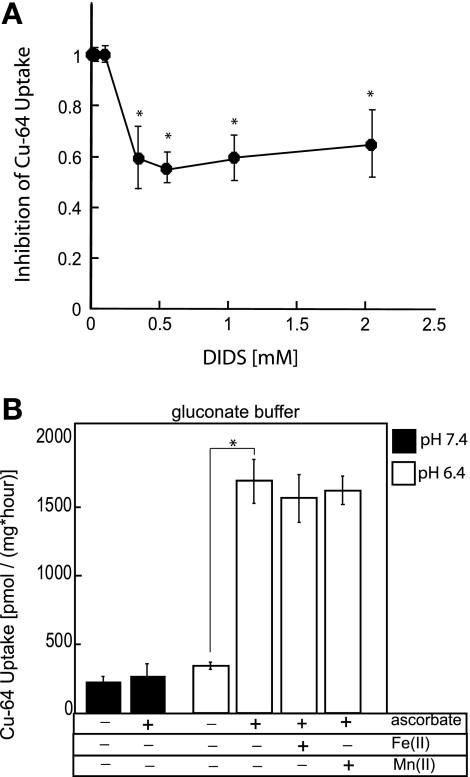Fig. 5.
Role of anion exchangers and DMT1 in copper transport. A: inhibition of apical copper uptake in polarized Caco2 cells by DIDS. Cells were grown on Transwells until polarized. Assays were carried out in transport buffer consisting of 150 mM NaCl, 5 mM KCl, 2.5 mM MgCl2, and 25 mM HEPES, pH 7.4, supplemented with increasing concentration of DIDS. DIDS was added to the upper (apical) compartment of Transwells, and cells were preincubated with the inhibitor for 30 min before the addition of radioactive copper. Assays were carried out for 1 h at 37°C. Mean ± SD values obtained from triplicate measurements are shown at each point. *P < 0.05, Student's t-test on Excel. B: ascorbate stimulates copper uptake in chloride-free medium at low pH. Chloride-free, gluconate transport medium was buffered with 25 mM HEPES, pH 7.4 (solid bars), or 25 mM PIPES, pH 6.4 (open bars). Where indicated, transport buffer was supplemented with 1 mM ascorbate, 50 μM iron(II), or 50 μM manganese(II). Caco2 cells were cultured on Transwells until polarized, and all 64Cu uptakes were measured from the apical side only. Values represent means ± SD displayed at each point. *P < 0.0005, statistically significant.

